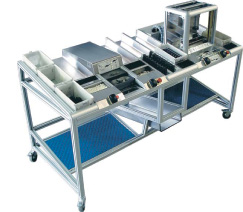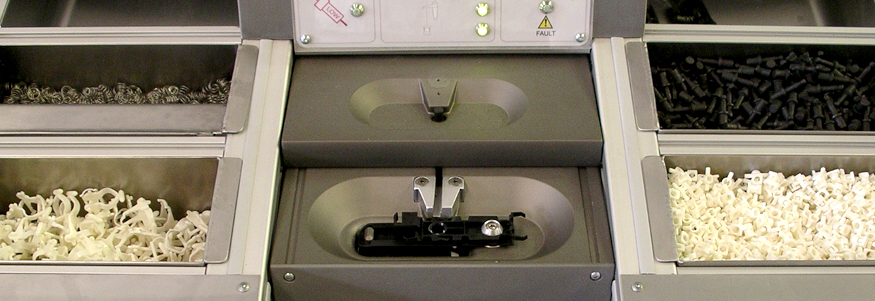The Client
Autoliv is an international company with a business focus on road and automotive safety. Autoliv is known for its supply of Automotive occupant Restraint devices like seatbelts and airbags to the global automotive industry including Holden, Ford and Daewoo. As such, very high standards of safety, quality and reliability are critical in this international vehicle environment.
The Brief
Autoliv sought Bayly to reduce the manufacturing costs and assembly problems associated with an upper seatbelt anchor point that included an adjustment feature. One of the main business issues for Autoliv was overhead cost reduction in terms of the supply and distribution into the global automotive marketplace.
Why Bayly?
After reviewing a number of concepts and proposals, Autoliv asked Bayly to design and build a total turn key solution.
Forward thinking is an essential part of the Bayly design process as is the ability to offer a total solution for our clients. We do our research thoroughly in order to fully understand our client’s needs and expectations. Past project experience has shown that our approach frequently discovers issues that they had not considered. Through early detection of design concerns the Bayly team can minimise client costs and completion delays, reducing your risk.
The Project
The project scope was to design a dual workstation with different assembly functions. The machine was to be PLC controlled and pneumatically driven.
Before the machine was commissioned and commercially installed, Autoliv quality and production specialists observed Bayly’s in-house testing and trialling of the workstations. The business issues for Autoliv involved two options: import the completed assemblies in Australia or to set-up and manufacture locally. In turn, factors like cost, quality and reliability were key considerations that Bayly had to incorporate into the project parameters.
Mechanical issues came with the project brief. It was essential that the new assembly cell was totally production-proofed before integration into the production line. On the people side of the project, the OH&S specifications included the need for a workstation that would be user-friendly to operators who had been assigned to “Light Duties”. This final requirement called for the Bayly team to research ergonomic issues like the reach factor, the full range of movement for repetitive tasks and the removal of any body twisting.
Outcomes

The overall aim of the design project with Autoliv was to ensure that they no longer required 100% visual inspection. Important innovations included; Sensors to detect the presence of parts or, more importantly, their absence. Until all the necessary components had been detected, the unit needed the ability to go into safety/quality mode thus preventing inappropriate or risky operation.
Storage areas where machine operators position springs, catches, pines and latches were carefully designed to ensure that all parts were stored in appropriate volumes, within easy and logical reach, and driven by gravity-feed delivery and dispatching systems. Other design innovations included; the creation of a display panel with LED indicators and additional sensors and display panels to make sure that part detection data would be fed back to the operator, thus ensuring their safety and helping them to assemble the devices correctly.
The Bayly approach to this project included full training of potential operators before the machine was finally set-up thus easing any transition problems. Our Bayly team got a great deal of satisfaction out of this advanced training activity as it showed how delighted the operators were with the ease of use and comfort of their new workstations.
Services supplied to Autoliv
The specific services supplied to Autoliv included risk assessment, concept development, detail design development, manufacturing / testing and commissioning, maintenance and operation manuals and training of Autoliv staff.


